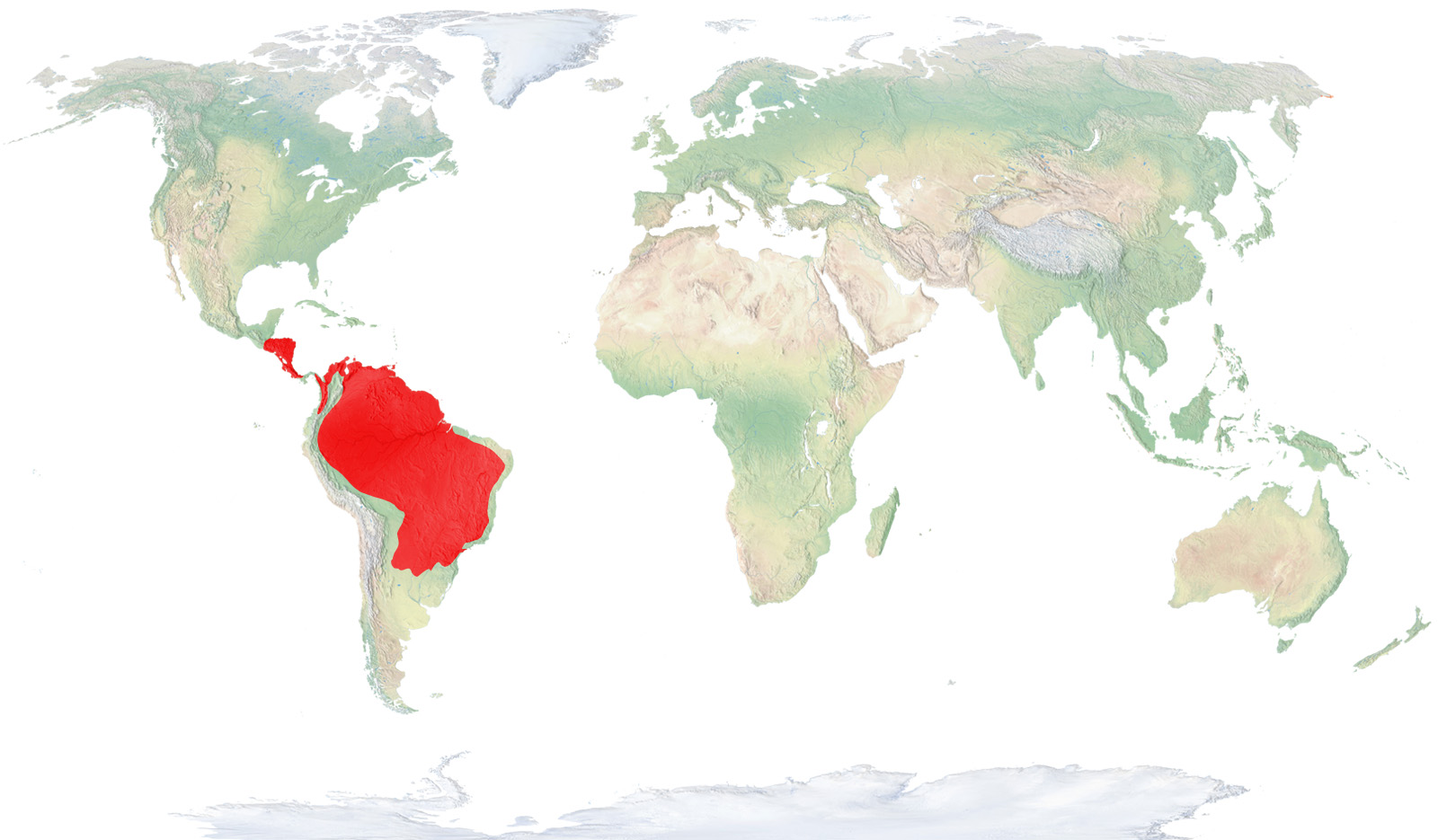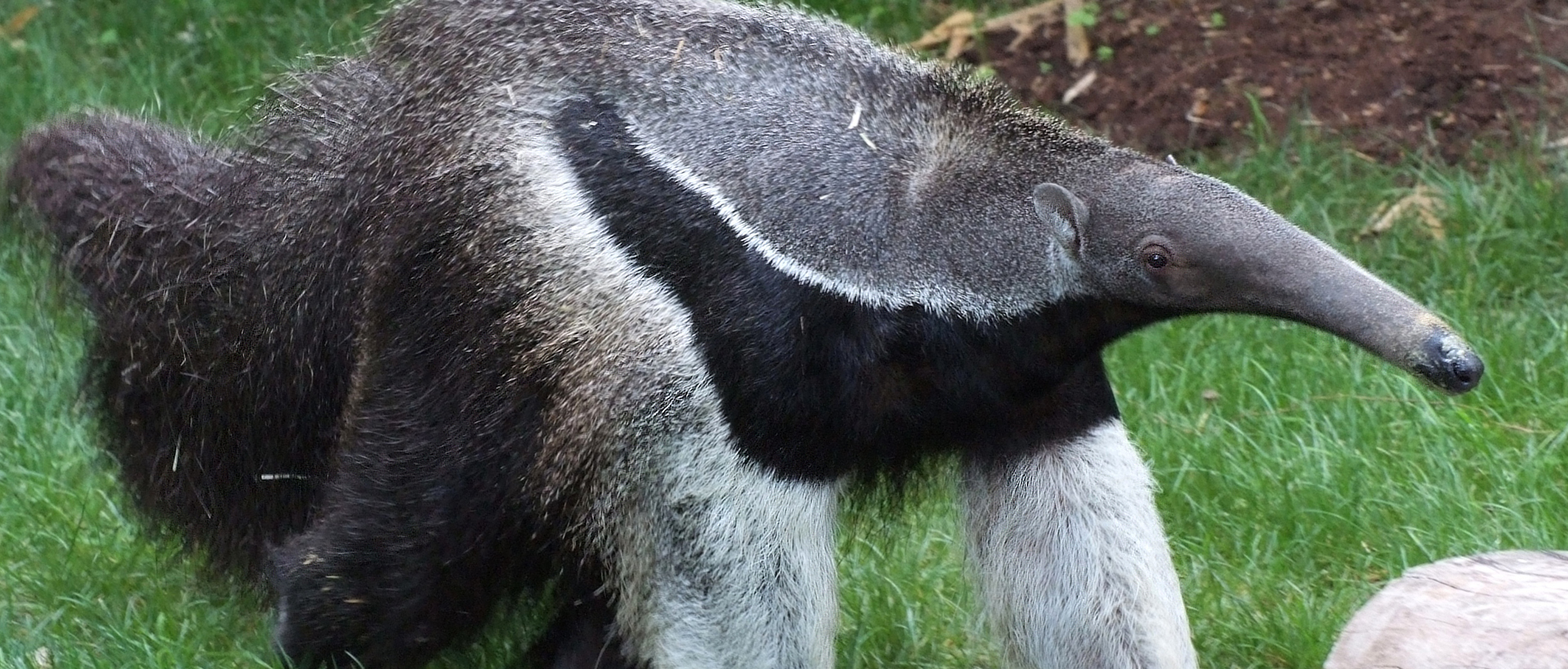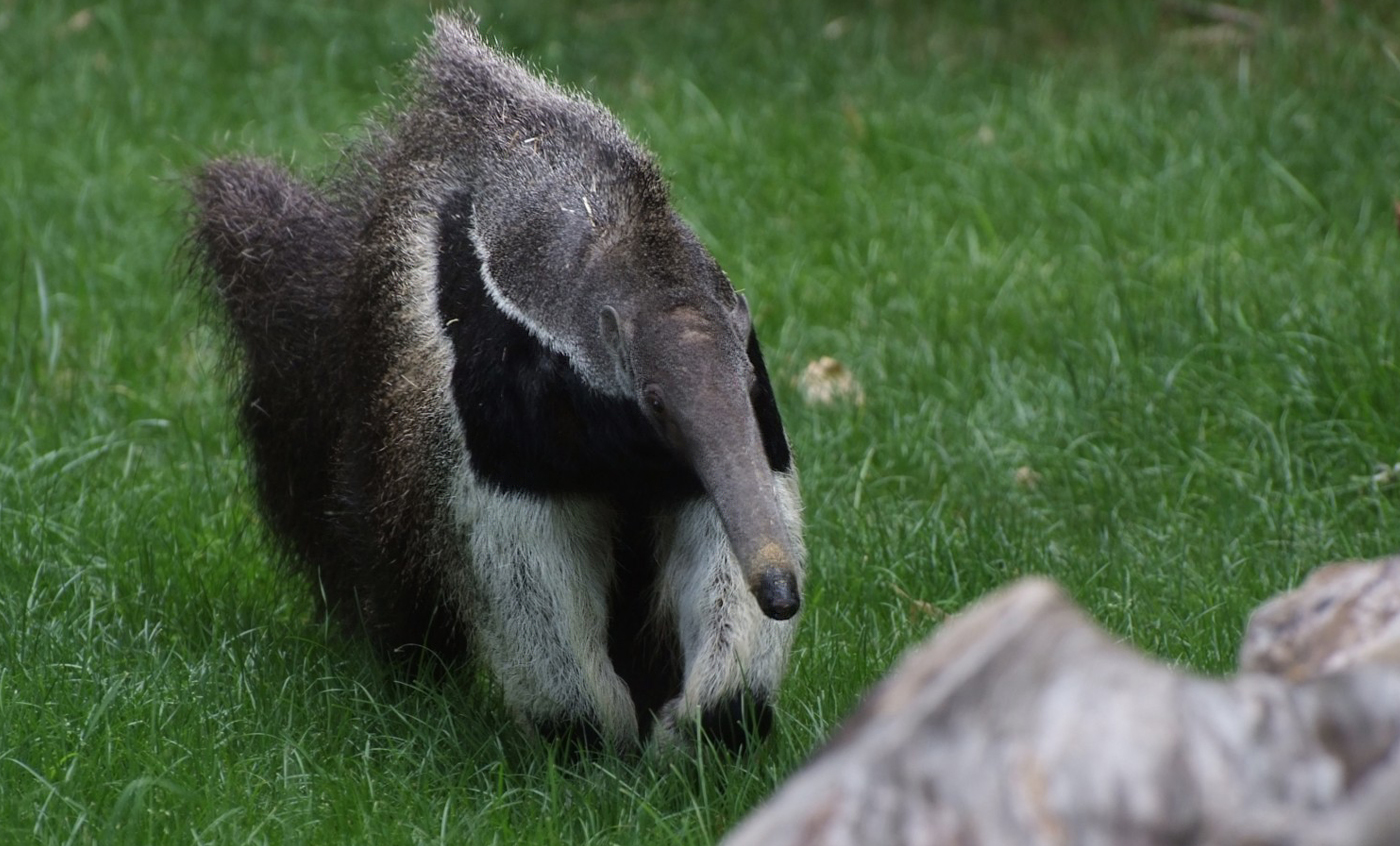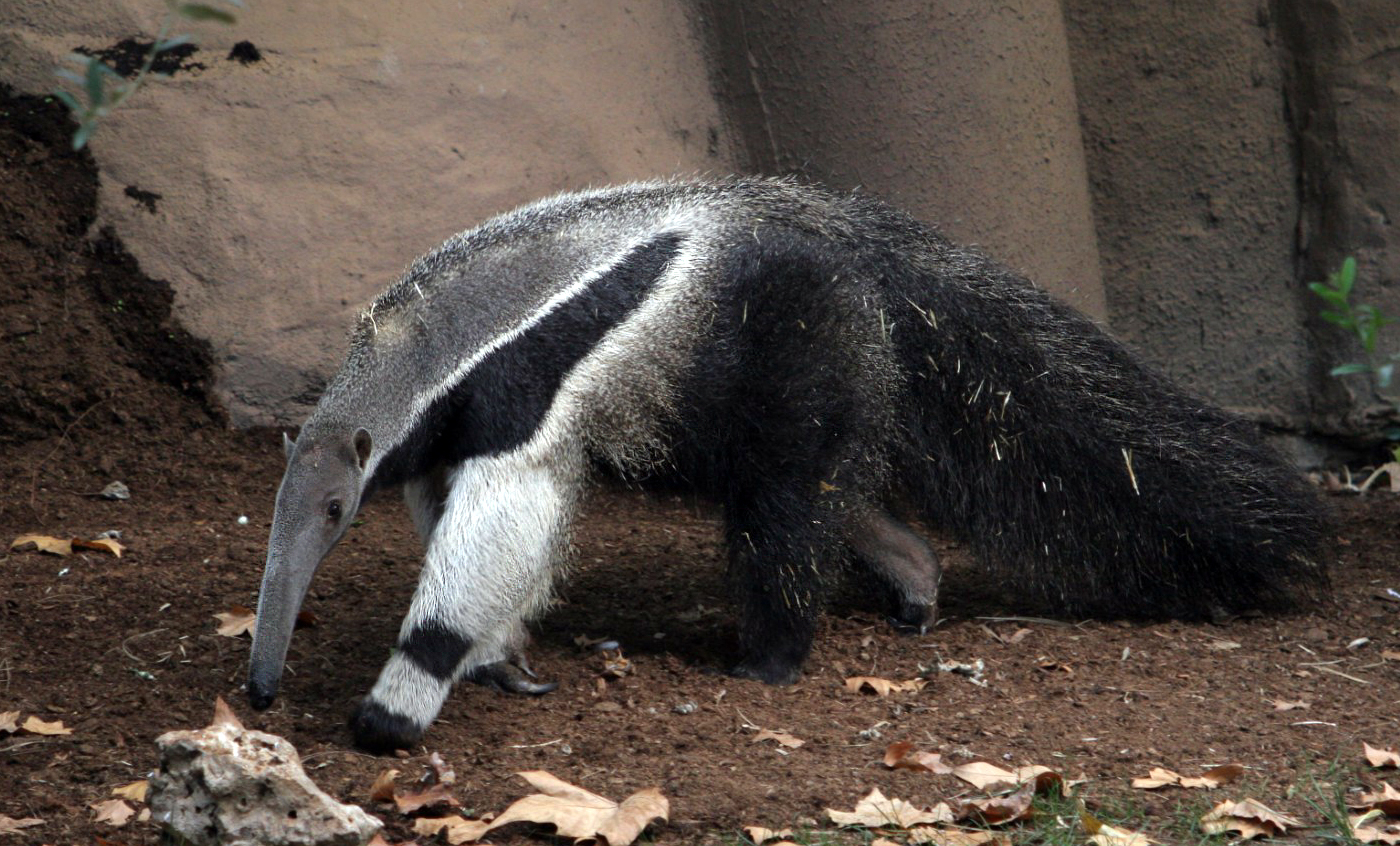Giant anteater
The giant anteater has a long, tubular snout without any teeth whatsoever. It feeds on ants and termites, which it catches thanks to its long, prickly tongue and its sticky saliva.
It is a solitary animal that only pairs during the mating season. Today, its numbers are in rapid decline as a consequence of over-hunting and the destruction of its habitat.
Breeding program
Natural habit
Central and South America.

- Distribution / Resident
- Breeding
- Wintering
- Subspecies
Risk level
- Extint
- Extint in the wild
- Critically endangered
- In Danger
- Vulnerable
- Near threatened
- Minor concern
- Insufficient data
- Not evaluated
Taxonomy
Physical characteristics
Biology
Reproduction
Biology
The giant anteater, also called the ant bear, is an extremely strange South American mammal that is characterised by having a tiny head and a long, conical muzzle, dense, thick and furry tail, long front claws and chestnut, grey and black fur. Its mouth opening is very small, with no teeth and an extremely long and narrow tongue, up to one metre long. Due to the length of its front claws, it walks on its knuckles, folding its claws into its palms.
The giant anteater lives in different habitats, including savannahs, grasslands, swampy areas, dry woods and rainforests. It looks for food in open areas, but rests in areas covered with trees.
An insectivore, it eats ants and termites almost exclusively. Its tongue, long and narrow, has tiny sharp spikes pointing inward and impregnated with a viscous saliva that make ants and termites stick to it when the animal sticks its tongue into their nests, with a frequency of up to 150 times a minute.
It is a solitary animal that only seeks a partner during breeding season. Gestation lasts from five to six months and only one baby is born in each birth. During the first year, the mother carries the baby on her back.
With diurnal habits when it is not disturbed, it becomes nocturnal in inhabited areas. It lives alone or in a pair and moves in broad territories of up to 25 km2, always on the lookout for termite mounds or anthills to feed on. To get inside the ant and termite hills, the anteater uses its strong curved nails, which are also important for defence. When attacked by a jaguar or puma—its only natural enemies—it sits back on its rear legs and strikes them with its claws, which can cause great injury to these powerful predators.
It is a good swimmer that often goes into the water, and can even cross quite wide rivers. Although it is a powerful digger, it does not dig burrows for sleeping, preferring to do so in a hole or another cavity in the ground, where it rolls up, putting its muzzle between its paws and wraps its big tail around its body.
At present, the giant anteater is endangered in many sites of its area of distribution. Indeed, it is extinct locally in different places, in almost all of Central America. The main threats to its survival are the destruction of its habitat, fire and furtive hunting for its skin and meat, even inside protected areas.
The Barcelona Zoo participates in this species’ EEP.





